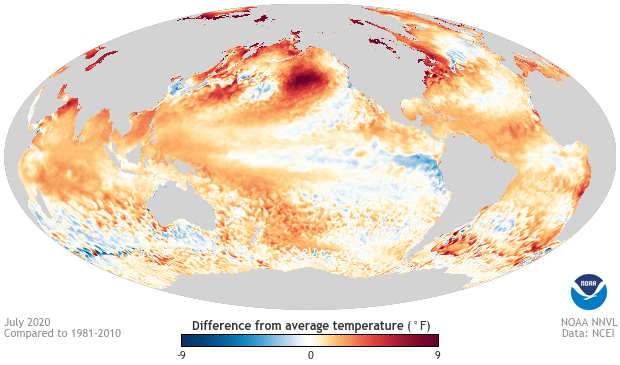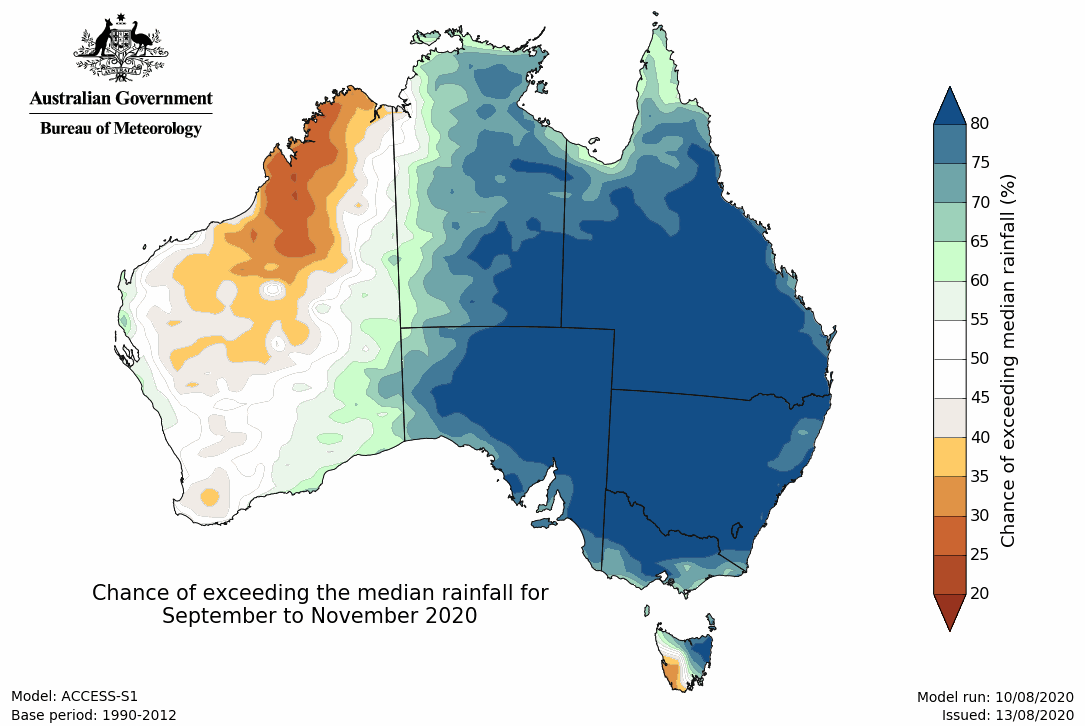Increasing chances of La Nina rains for Australia
The prospect of a wet and stormy spring is increasing for large parts of Australia, with the U.S. Climate Prediction Centre raising its odds for La Niña in the months ahead.
The Pacific Ocean is currently in a neutral phase, meaning neither El Niño or La Niña are occurring. However, wind patterns and water temperatures in the equatorial Pacific Ocean are in a La Nina-like pattern. A number of international forecast models suggest that this pattern could continue to develop in the months ahead.

Image: Sea surface temperature anomaly during July 2020, showing a La Niña-like pattern with relatively cool water near the equator in the cenrtral and eastern Pacific Ocean and relatively warm water in the equitorial western Paficific Ocean. Source: NOAA
Australia's Bureau of Meteorology rates the likelihood of a La Niña event developing this spring at 50 percent. On Thursday, the U.S. Climate Prediction Centre raised their odds of La Nina this (southern hemisphere) spring to 60 percent.
La Niña events typically cause above-average rain in large areas of northern and eastern Australia. They also cause a more active tropical cyclone season in the Australian region more often than not.
In response to the La Niña-like state of the Pacific Ocean and the outlook for the months ahead, the Bureau's latest seasonal outlook predicts that almost the entire eastern two-thirds of Australia should see above-average rain this spring. For many areas, the likelihood of a wetter-than-average spring is higher than 80 percent.

Image: Rainfall outlook for the coming spring (September to November). Source: Bureau of Meterology
Last year, Australia registered its driest spring on record, underpinning a horrific bushfire season for multiple states and territories. This year, spring has the potential to look very different for most of the country.